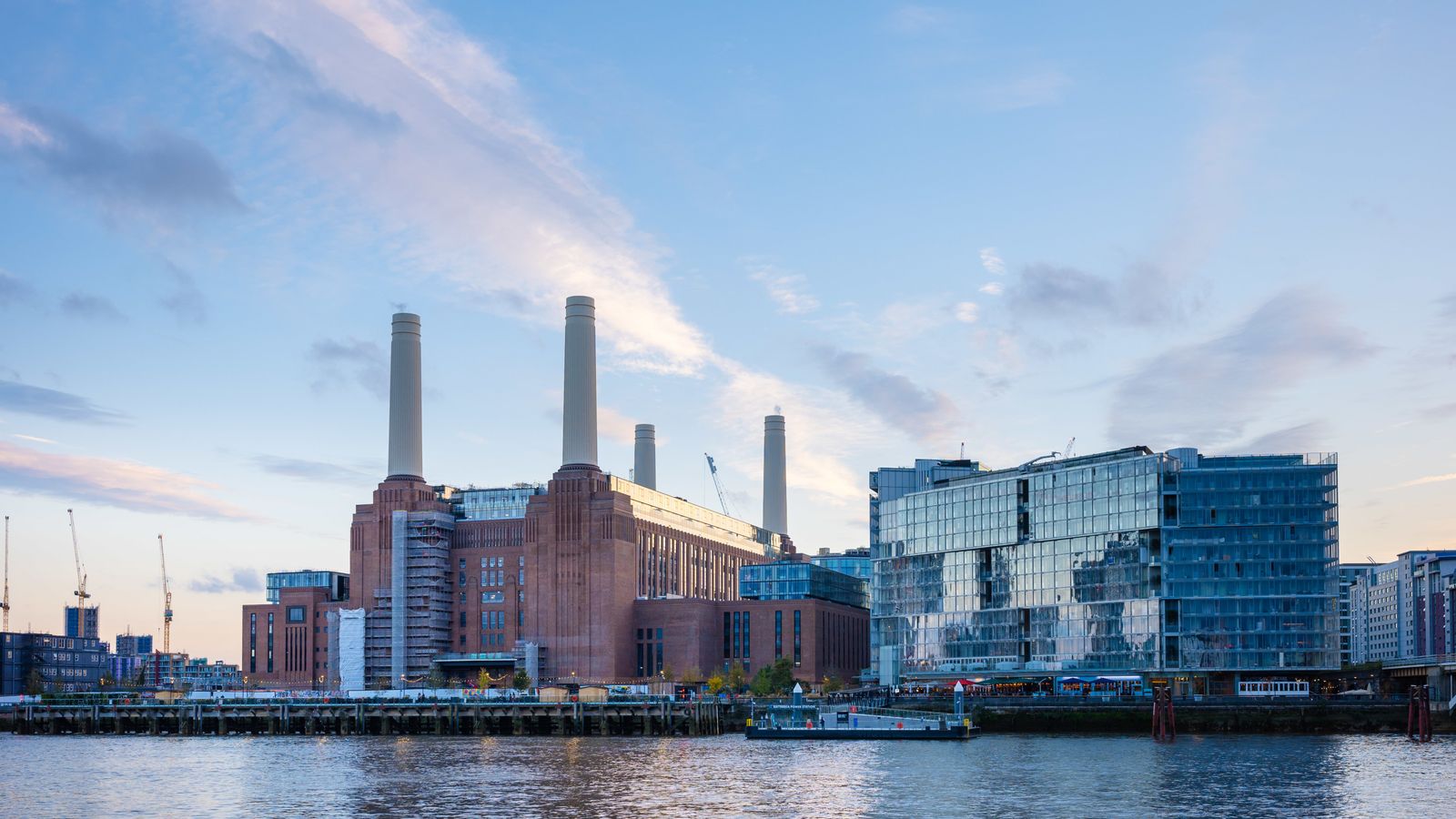The newly redeveloped Battersea Power Station, one of the toughest challenges ever faced by a London property developer, opens next week after a 10-year project to turn it into a hub of offices, apartments, restaurants and shops.
The 1930s building, often described as the “Everest of real estate”, once supplied a fifth of the capital’s electricity, including to Buckingham Palace and Parliament.
It also became famous for being pictured alongside a floating inflatable pig on the cover of Pink Floyd’s 1977 album Animals.
There have been a series of false starts in its £9bn redevelopment, including an attempt to recreate it as a theme park.
But this new project, backed by a group of Malaysian investors, will see thousands of people living and working on the site after its formal opening on 14 October.
Apple will become the largest office tenant, occupying six floors in the former central boiler house of the power station, known for its four white chimneys that dominate the skyline over the south bank of the River Thames.
About 96% of the commercial space has been filled up, Battersea Power Station Development Company boss Simon Murphy told reporters.
David Haye cleared of assault as judge rules he has no case to answer
Climate protesters sit in road and block major bridges in London
Police launch murder investigation after fatal stabbing in north London
“It has taken a lot of hard work, determination, and the continued commitment of the Malaysian shareholders over the past 10 years to bring Battersea Power Station back to its former glory,” Mr Murphy said, noting the cost of restoring the station was £2m per day at its peak.
‘Not possible without new Tube station’
The Battersea project, spread over an area the size of 32 football fields, got a major boost from the opening last year of a London Tube station a two-minute walk away, partly funded by the development company.
“Without the Tube, we wouldn’t have brought our office occupiers, we wouldn’t have brought the retailers,” Mr Murphy said.
“Neither project could survive without the other.”
The coal-fired power station was shut down completely in 1983.
Its redevelopment includes more than 250 apartments starting at £865,000 apiece around the power station, in addition to commercial space that should bring in £100m of rent annually.
The project will also bring under one roof dozens of retailers including Zara, Hugo Boss and Ralph Lauren, and several restaurants including a 1950s-themed bar at the site of the station’s Control Room B, replete with now-defunct mechanical switches and dials.
For views of London’s skyline, visitors will be able to take a lift 109m up to the top of one of the chimneys, rebuilt
over three years with 25,000 wheelbarrows-full of hand-poured concrete to match original design specifications.









